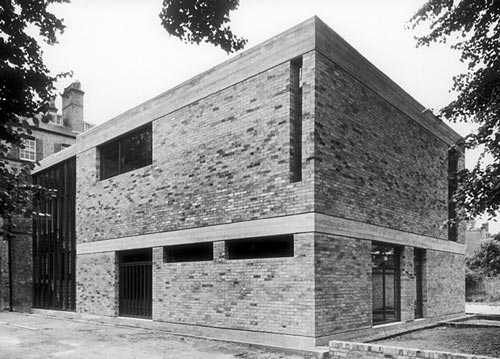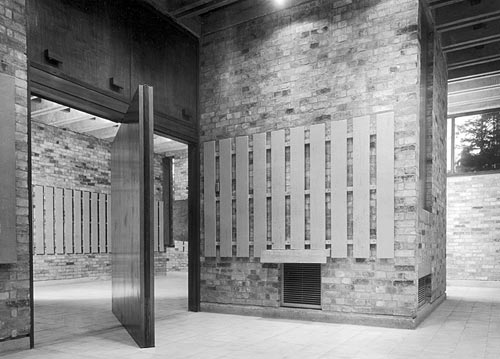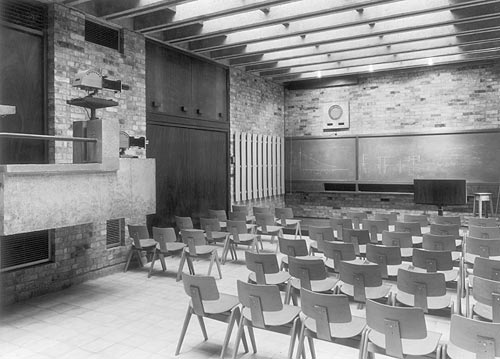This website uses cookies
This website uses cookies to enable it to function properly and to analyse how the website is used. Please click 'Close' to accept and continue using the website.





August 2002 - Extension to the Cambridge School of Architecture
On 11 June 1959, Le Corbusier and Henry Moore attended the inaugural opening of a new wing to the Cambridge School of Architecture. They had been invited by Professor Leslie Martin, who had commissioned the building from architect Colin St John Wilson and environmental scientist Alex Hardy – both tutors in the department.
The students gathered in the new lecture theatre that evening had watched the building take shape during the previous year. They were directly involved with the design and detailing as St John Wilson set projects around the creation of his canonic brutalist collaboration. In the words of critic Reyner Banham it was a ‘manifesto building’ and ‘one of the most eclectic designs ever to be packed into an anonymous-looking brick box’.
For me, part of the enduring appeal of the extension is St John Wilson’s characteristically beautiful articulation of space and light – executed with a rigorous approach to design. Le Corbusier’s Modulor proportional system was used throughout, and spatial relations within the building are governed by the golden section. Another feature, and arguably the one that ensured its inclusion in the brutalist canon, is the use of materials ‘as found’. Raw concrete and recycled Cambridge bricks are visible inside and out, with none of the plastering or ‘making good’ commonly used to hide the process by which buildings are constructed. These materials combine with simple woodwork and tiling to result in an appreciable unity through both structural elements and surfaces.
Hardy’s contribution to the design process included advising on the lighting, heating and acoustics. These are notably advanced for the period. From the lectern the lecturer can operate the hall lights and the Optiscope slide projector, as well as opening or closing the louvered ceiling skylights. Storage, heating and other services are provided via a brick core running through both floors.
Today the building is still very much in constant use. On the ground floor are offices and a criticism space, originally a staff common-room. The first floor is a single top lit exhibition space that can be divided into a criticism space and lecture theatre. This is achieved using pivoting doors that recall the entrance to the church at Le Corbusier’s contemporary monastery of La Tourette.
I first discovered the building in Reyner Banham’s book The New Brutalism (Architectural Press, 1966), and have been working with the support of the college and Colin St John Wilson over the past year in preparation for this summer’s exhibition. The project involves the cleaning and partial restoration of the first floor, followed by the installation of concrete multiples and a light projection which have been designed to complement the space. Visitors to the exhibition will have a rare opportunity of seeing the first floor interior of this unique and beautiful building in a state close to that which the architect originally intended.
The exhibition runs from 19 to 30 August 2002, open daily from 12 to 4 pm. Admission is free. For further information please call 07711 611 280.
With many thanks to Peter Carolin and Colin St John Wilson for documentary and interview material.
Look for past Buildings of the Month by entering the name of an individual building or architect or browsing the drop down list.

Become a C20 member today and help save our modern design heritage.